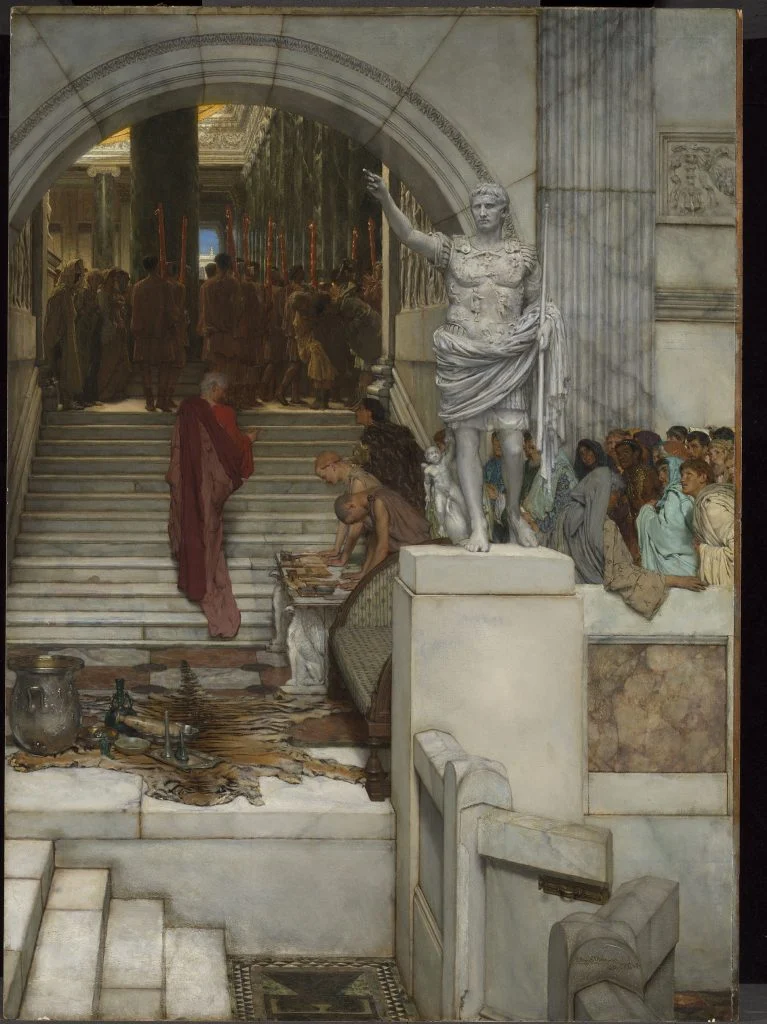London’s National Gallery has just scored a monumental acquisition for its 200th anniversary, finally securing a work by the Dutch-born Victorian master Sir Lawrence Alma-Tadema. The painting, After the Audience (1879), was brokered through Christie’s, with the museum paying £2 million to Pre-Raphaelite collector Isabel Goldsmith for the prized canvas. This marks the first time the gallery has added an Alma-Tadema to its prestigious collection.
After the Audience captures a moment of serene grandeur as Marcus Vipsanius Agrippa, son-in-law to Emperor Augustus, ascends the stairs of his villa, the spoils of his public duties displayed at his feet. The painting, rich in historical detail and suffused with the artist’s signature blend of Neoclassicism and Aestheticism, represents a significant addition to the gallery’s holdings, which have long lacked representation from these key artistic movements.
Born in the Netherlands in 1836, Alma-Tadema trained under the historical painter Gustave Wappers at the Academy of Fine Arts in Antwerp and later worked alongside Louis Jan de Taeye, who instilled in him a deep appreciation for the accuracy and romanticism of the ancient world. This fascination was further kindled during his Italian honeymoon in 1863, which left a lasting impression on his work.
The Franco-Prussian War of 1870 prompted Alma-Tadema to relocate to London, where his work found a receptive audience. Although he never officially joined the Pre-Raphaelite Brotherhood, his friendships with its members influenced his style, leading to a unique fusion of their ethereal aesthetics with his own meticulous craftsmanship.
After the Audience was originally commissioned by British industrialist William Armstrong, who was captivated by Alma-Tadema’s earlier work, An Audience with Agrippa (1876). The two paintings share a thematic core, both centered around the figure of Agrippa, but After the Audience shifts the scene to a more intimate, dusk-lit setting, evoking the mood of a grand finale rather than a beginning.
Interestingly, Armstrong, perhaps disappointed by the departure from the original’s brighter tone, never purchased the painting. Yet, Alma-Tadema’s contemporaries quickly recognized its brilliance, and it was showcased at the Scottish Royal Academy that same year. Over the decades, After the Audience has graced the walls of esteemed institutions such as the Van Gogh Museum in Amsterdam and London’s Leighton House Museum.
This acquisition is the third major purchase by the National Gallery in celebration of its bicentennial, following the addition of La Psyché (The Full-length Mirror) by Eva Gonzalès earlier this year. Now on display in Room 45, After the Audience stands as a testament to the gallery’s ongoing commitment to enriching its collection with masterpieces that capture the imagination and spirit of their time.
In reuniting After the Audience with its thematic predecessor, now housed at The Dick Institute in Scotland, the National Gallery has not only expanded its collection but also reconnected threads of Victorian art history. As Christie’s senior director Peter Brown aptly put it, “It is very satisfying that Before the Audience and After the Audience are now both in public collections, in Kilmarnock and London.”







